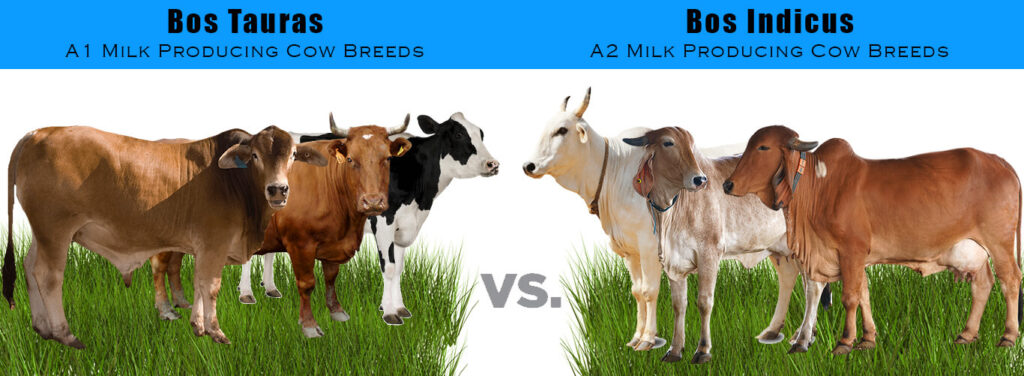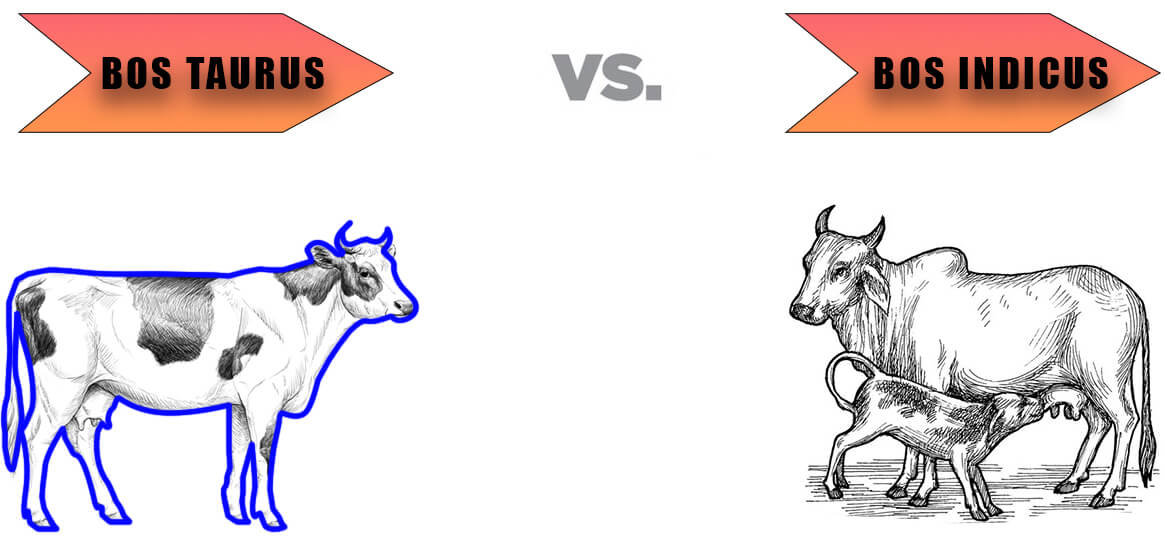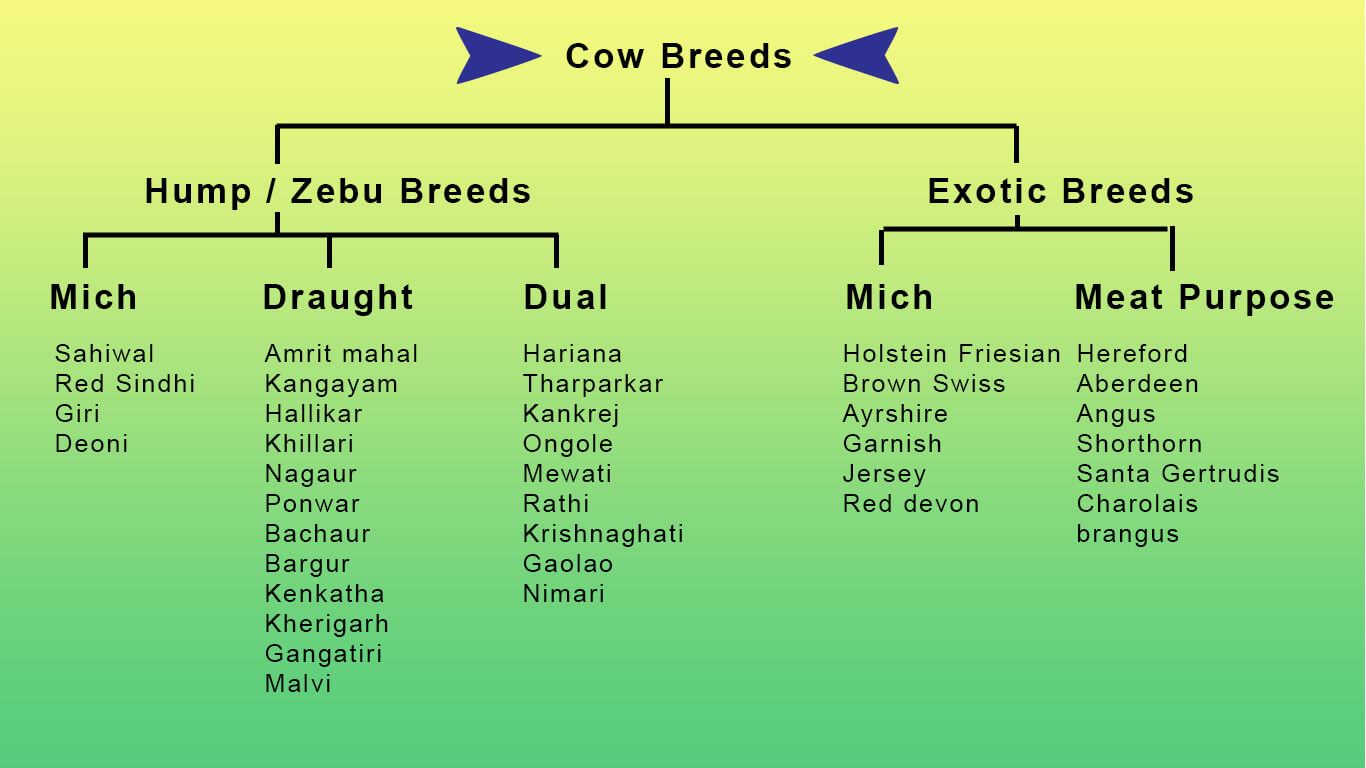
There are always arguments about cows, especially the Cow that originated from India (Indian Cow or Zebus), Which are also considered the Holy Cow. Straying cattle on roads has become a significant cause for concern in India; nonetheless, there is always a debate about this holy animal. Let’s understand the difference between the Indian Cow or Desi Cow and the Other foreign cows.
Cows are large in size and tame, cloven-hooved herbivores. Adult females are often called cows, and adult males are called bulls or Ox. Cows are mainly raised as livestock for Milk, Meat (Beef), and hides. The Ox or Bulls are also used as riding animals and draft animals. Another byproduct of cattle is dung which can be used to create organic fertilizer (Compost) or as fuel (Cow Dung Cake).
Classification of Cow
The Cow belongs to the Mammalia class in the taxonomy of Whittaker. They are well-known modern members of the subfamily Bovinae and the most widespread species of the genus Bos.
Following is the appropriate classification of the Cow.
| Kingdom | Phylum | Class | Order | Family | Sub-Family | Genus |
|---|---|---|---|---|---|---|
| Animalia | Chordata | Mammalia | Artiodactyla | Bovidae | Bovidae | Bos |
The above table depicts the proper classification of the Cow, but once we reach the species that make Indian cows different. The other Cow’s species is Taurus (Bos. Taurus); however, the Indian Cow’s species is Indicus (Bos. Indicus). Both serve different purposes hence classified into other species based on work, nature, nurture, and morphological differences.

Before we begin, let’s have a clear idea about species. A species is a group of plants or animals with the exact origin, anatomy, and morphology. There are many domesticated animals; hence, around the world, there are more than 3,217 species of domestic animals, and in particular, 960 species of cows. We can find around 30 species in India. Here is the brief list of the Cow corresponding to the purpose of how they are used and species bifurcation. This purpose will provide an overall idea about the Indian Cow, called Zebu Species.

The Cow can quickly identify the desi cow and the exotic Cow, but we must also keep a few aspects in mind. One of the ways to determine the Indian Cow is they have Humps. However, the other foreign Species do not have humps.
Difference between the Indian Cow and the foreign Cow
Here is the list which will give you a better idea of how to identify the difference between these two.
- There is a heavy, fatty, fleshy Muscle structure between the neck and waist and above the withers. That is called a Hump; hence the breeds of Indian cows are called Humped breeds (Humped or Zebu Breeds).
- There is a heavy layer of welt-like skin under the neck of the Indian Cow, which is called Dewlap or Flap (Galkambal).
- The tails of the Indian Cow are sloping, while in the breed of foreign cows are flat.
- The root of the tail in an Indian cow is pressed between the pin-bones, whereas in a foreign cow breed, it is raised.
- The sheath of humpback animals is enormous.
- The Udder of Indian cows is very small, while the udder of milch cows of foreign cow breeds is large and well developed.
- The skin of humpbacked animals is thick and loose, whereas the skin of animals without humps is thin and tight.
- The back of foreign breed cows is straight, while that of Indian cow breeds is sloping.
- The horns of foreign breed cows are straight and outward, while the horns of Indian cow breeds are raised upwards.
| Zebu Species | Foreign Species | |
|---|---|---|
| Height | Taller | Short |
| Hump | Present | Absent |
| Voice | roar in a loud Voice | Fine & Slow |
| Milk Production | 6 to 8 Kg/Day | 15 to 30 Kg/Day |
| Fat in Milk | High | Low |
| First Child | 3 Years 4 Months to 3 Years 9 Months | 2 Years 3 Months to 2 Years 6 Months |
| Tail | Sloping | Straight |
